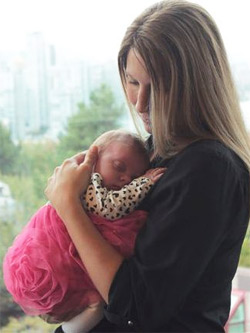
As many as 1.5 million married couples in the United States have a difficult time starting a family, and many of them turn to fertility experts for help. Now a new technology is increasing the odds that an implanted embryo will result in a successful pregnancy and delivery. Submit
Ten month old Olivia is the apple of her sisters eye. The youngest of Chris and Lisa Randles eight children, Olivia is the result of a new technology that helps fine-tune in-vitro fertilization.
Thomas B. Pool, PhD, HCLD (ABB), Scientific Director at the Fertility Center of San Antonio told Ivanhoe, Weve been looking for over 30 years for some way for an embryo to distinguish itself, for us to learn something about its viability.
A new test can help. Its called Eeva or early embryo viability assessment.
Using a time lapse video, Eeva takes pictures of embryos every five minutes for two days. Its capturing the timing of cell division. A highly viable embryo or Eeva high will have division at two distinct points.
Pool explained, If the embryo hits both of those windows correctly, it has a significantly higher chance of continuing to develop, of implanting and making a baby.
Tests using Eeva have shown a 23 percent increase in pregnancies when in-vitro fertilization uses an Eeva high embryo.
For both doctors and patients, the Eeva test offers another benefit. Its a noninvasive test; we dont have to do anything except have the computer look at videos, Pool said.
Lisa Randle, Olivias mother told Ivanhoe, Its just a miracle to me to be able to actually see that with my own eyes. A miracle they can now hold.
The Eeva test received FDA approval in late 2014 and has recently become available at fertility clinics nationwide. It costs about $1500 in addition to the cost of the in-vitro fertilization. The system has been in use in Europe for some time already.
Contributors to this news report include: Cyndy McGrath, Supervising Producer; Shari St. Clair, Field Producer; Cortni Spearman, Assistant Producer; and Jamison Koczan, Editor.
.